2 years ago SonicWall approached Bluetext with a campaign challenge: “Help us infuse originality within an over-saturated cybersecurity market. Portray Boundless Cybersecurity ability to break free of cyber threats.”
Bluetext’s response? Hours upon hours huddled over brainstorming sessions until the winning idea came to light. Portraying the end-users in a surrealist, anti-gravity state in which they quite literally “break free” from the constraints and anxieties of impending threats. But how could this be done? With a troupe of ballet dancers, a giant trampoline, and an imaginative team of creative & strategic minds the first Boundless photoshoot was made possible.
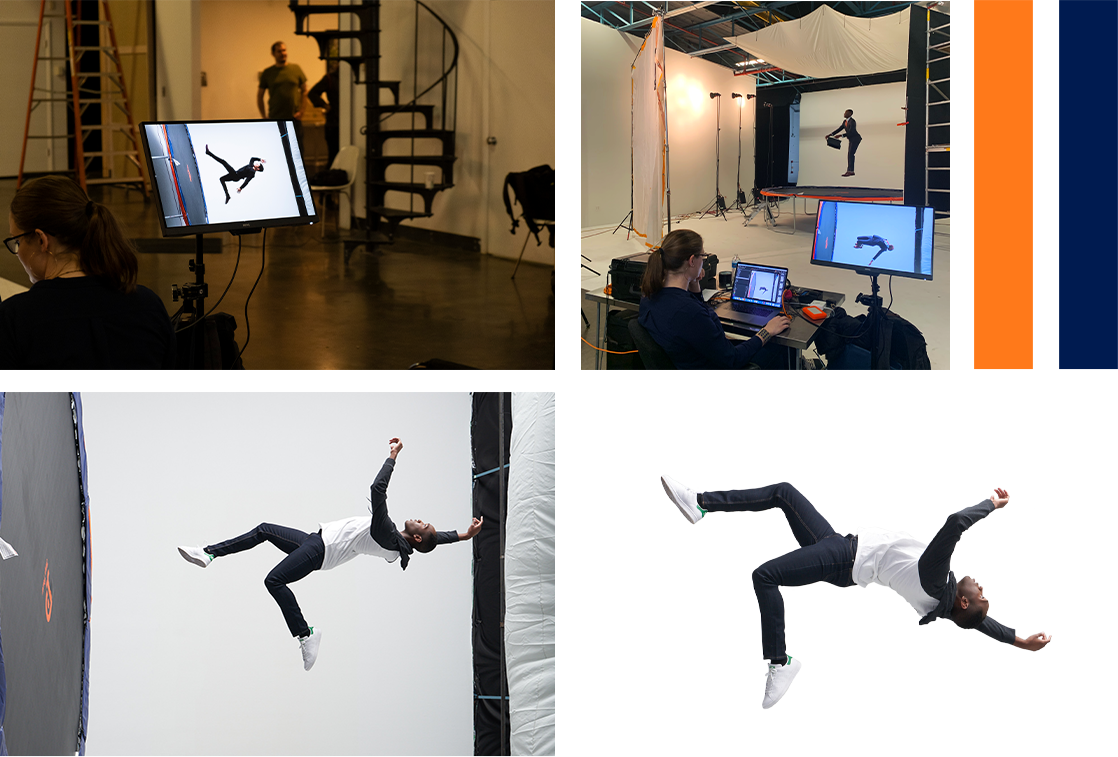
By knowing the unknown, providing real-time visibility, and enabling breakthrough economics, SonicWall protects against boundless exposure points for increasingly remote, mobile, and cloud-enabled workforces. In order to communicate SonicWall’s business values across a variety of businesses, Bluetext prescribed a verticalized approach to target the unique needs of each industry. Every detail, from costume to backdrop, was personalized to resonate with distinct audience personas. To truly stand out and earn attention in a crowded cybersecurity arena, the campaign centered on fantastical floating imagery, which served to visualize an anti-gravity feeling of breaking free of cyber threats. To achieve this vision, action photography of models jumping and free-falling atop a giant trampoline was captured. With custom photoshoots, expert post-production editing, and head-turning taglines Bluetext truly elevated the campaign to new heights. As a collection, the campaign imagery showcased SonicWall’s wide range of customer success, and as individual targeted campaign assets, the images emphasized SonicWall’s application to industry-specific use cases. New website pages, banner ads, and social graphics were developed to reinforce ”When Cyber Threats Are Limitless, Your Defenses Must Be Boundless.”

The campaign was a roaring success. So much so that it inspired a Boundless 2.0 campaign that elevated key art imagery to 3D video production to tell the evolving Boundless story. This time, the campaign focused on the end user’s journey into a surrealist, anti-gravity state of mind. The campaign video spans a variety of industry applications, from higher education libraries to retail shops, but focuses on the perspectives of an SMB and remote employee. The narrative describes the current state of cybersecurity, being a sense of closed-off isolation to avoid the fear of cyber threats, but begs the question of ‘what if?’ The main characters are shown proceeding through their daily responsibilities (whether that be commuting into the office, or multi-tasking child care responsibilities at home) until interacting with SonicWall products on their given devices. As these users connect to SonicWall they experience the unconventional possibilities of cybersecurity; ‘What if cybersecurity felt…free?’ The characters are transitioned to a surrealist Boundless world, in which 3D video effects bring a state of gravity-free liberation from constraints of the past. The characters “break free” to realize a more secure, yet freer, future with SonicWall.
To further compliment the Boundless 2.0 campaign video, Bluetext brought the story to life on the SonicWall website homepage and campaign landing page. Both of which feature 3D video in the hero zone to showcase Boundless Cybersecurity for both the remote and in-office workforce. Bluetext animators built a custom 3D environment for each character, which is showcased through 360 pan-around camera effects. Attention to detail was everything, from the outfits worn by the character to the interior decor with hints of the SonicWall brand elements. The characters themselves even parallax for hyper-realistic body motion. The rest of the pages were designed by the Bluetext website & UX designers to highlight the campaign’s core messaging, featuring new products and industry-related use cases.
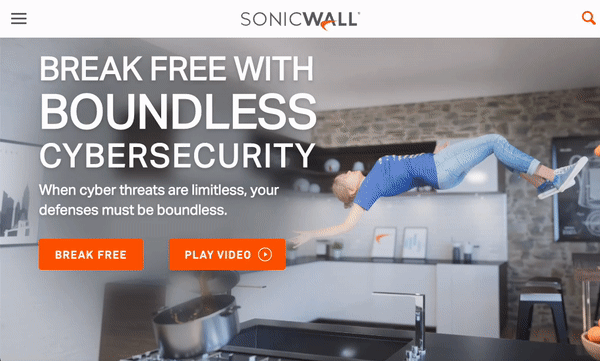
In an impressive feat of animation, website design, videography, and most of all creative brainpower, Bluetext accomplished its challenge. The Bluetext and SonicWall team combined forces to bring new energy and direction to the SonicWall Boundless Cybersecurity campaign. In two years the campaign has evolved to new heights, but just like SonicWall security, the potential is boundless. Stay tuned to see how the campaign further evolves in 2022, and contact us to see how we can develop a state-of-the-art campaign for you.
If you can’t measure it, you can’t manage it. Whether you are looking to drive brand awareness, drive qualified leads, or polish up your brand, there is always a goal in mind when hiring a marketing agency. At Bluetext, the goal that rises to the top is M&A. Many companies come to us because they want to go public, be acquired, or be acquisitive in the next 18-24 months.
We have a strong track record of helping clients achieve an M&A goal. Within 24 months of a Bluetext engagement, 47 of our clients have entered into a financial transaction. So what’s the secret? Unfortunately, there is no one size fits all recipe for a market-ready rebrand. However, Bluetext’s strategic approach to messaging, branding, campaign & website design tailored to specific client goals has had proven success in highlighting a company’s unique value to investors. Let’s take a look at the last 12 months of mergers and acquisitions for our clients.
JANUARY
Kicking off the new year with exciting news, Deloitte announced the acquisition of Bluetext client, R9B, a leading provider of advanced cyber threat hunting services and solutions. Following a PR engagement with Bluetext, R9B had earned a strong industry reputation and the attention of the leading global professional services giant. With the addition of R9B’s business, Deloitte’s Cyber Detect and Respond offering will continue to help clients gain a leading edge in cyber defense, integrate fragmented security toolsets, achieve efficiencies in security operations programs, accelerate response time to potential threats and provide data-driven threat insights.
FEBRUARY
The Bluetext team learned that long-time client, Perspecta, had been acquired by national security contractor Peraton in a deal worth $7.1 billion. This announcement followed a multi-year engagement with Bluetext that began with a merge of Vencore, and KeyPoint. These public sector businesses merged to form Perspecta, a government services provider with 14,000 employees and pro-forma revenues of $4.2 billion. The Perspecta team turned to Bluetext to develop a vibrant new brand and website that provided the flexibility and scalability needed to enter the market. The Perspecta brand proved to be an attractive investment to industry leader, Peraton. The combined company will create a government technology provider that delivers end-to-end capabilities in IT and mission support and serves as a strategic partner across a diverse array of U.S. government customers.

MARCH
Bluetext client Galois announced their spin-off company, MuseDev, had been acquired by supply chain management software leader Sonatype. The opportunity to pair Muse with Sonatype’s Nexus platform will dramatically expand its market reach to developers and deliver huge improvements to source code quality. Like MuseDev, all of Galois’ spin-outs focus on interesting and deep challenges in computer science, and Bluetext is excited to see what this company’s future may hold.
APRIL
AMETEK, Inc. announced a completed acquisition of Abaco Systems, Inc., a former Bluetext client and a leading provider of mission-critical embedded computing systems. Prior to this recent acquisition, GE and Veritas Capital engaged Bluetext to develop a new name and brand. Thus, Abaco Systems was born and the Bluetext team worked around the clock to create a unique new brand in less than a month. The newly formed company and brand identity hit the ground running, and developed a reputation that caught the eye of AMETEK, Inc. David A. Zapico, AMETEK Chairman and CEO, shares “Abaco’s market-leading computing and electronic solutions nicely complement our existing aerospace and defense businesses, expanding our positions across many attractive growth platforms.”
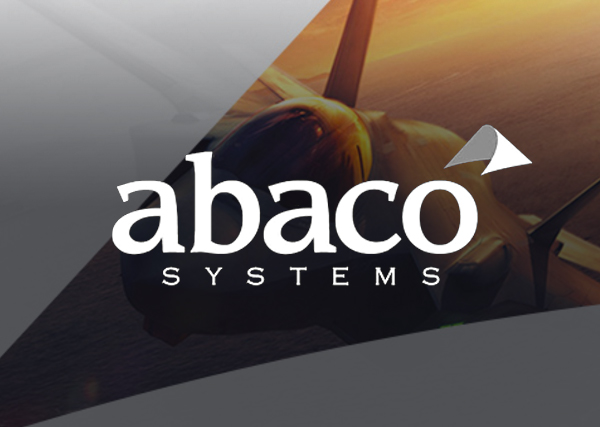
MAY
Arlington Capital Partners announced a completed acquisition of Triumph Group, Inc.’s composites business. Arlington Capital engaged Bluetext for a new brand, messaging, and website to position the company as a leader in aerospace composites. Under the bold new name Qarbon Aerospace, or QA, stands for ‘quality assured’, representing the company’s relentless pursuit of quality. Bluetext moved fast to create a brand that would make a lasting impression on the market. The logo showcases their commitment to quality, and nod to the industry through the shape of a plane that connects the QA within the logo. The new website included custom photography showing off Qarbon’s core capabilities, as well as a virtual tour that lets users explore Qarbon’s 1,650,000 ft² of state-of-the-art facilities. In a triumphant feat, the company went to market with a high caliber and professional image.

JUNE
Bluetext is pleased to announce the launch of Axient. The team at Axient came to us following a series of mergers and acquisitions for a new name, brand, and website. A rebranding announcement in June publicized the new company name, messaging and brand essence video with an interim landing page for the full website launch. A few months later, Bluetext launched the full Axient website, which united four prior companies’ capabilities. Learn more about our work with Axient.

JULY
Where UX meets XM… In July, Qualtrics, the world’s #1 Experience Management (XM) provider and creator of the XM category, announced the acquisition of Bluetext client, Clarabridge, the leader in omnichannel conversational analytics, in a stock transaction valued at $1.125 billion. In a previous engagement with Bluetext, Clarabridge sought out a new brand and website experience to match their sophisticated AI-powered platform. Bluetext created a digital manifestation of the Clarabridge brand to engage site users and explain the technological and analytical power behind the platform. Through sophisticated 3D animation work, the user experience came alive and communicated Clarabridge’s value — to customers and investors alike!
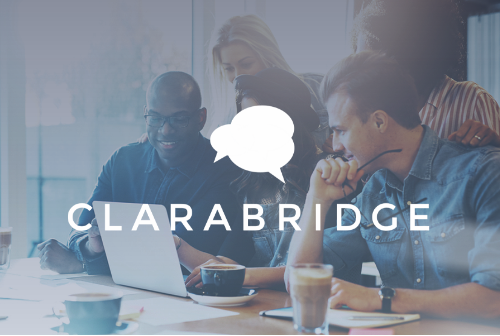
AUGUST
KBR, Inc. announced a definitive agreement with Arlington Capital Partners , a Washington, DC-based private equity firm, to acquire Centauri, LLC. Bluetext developed and launched the Centauri brand, following Arlington Capital Partners’ acquisition of three leading companies in the national security sector. Looking to enter the market with a completely fresh start, the team turned to Bluetext to develop and launch a new unified brand from scratch. In less than 6 months, Bluetext launched the Centauri website with a cutting-edge look and feel that set them apart from the competition. The Centauri logo used a unique icon representing the stars that make up the Centauri constellation, to accentuate the new brand messaging “Brilliance when Great Minds Align”. Their website incorporated all of the brand’s new elements, with intentional design and user experience to prioritize recruitment and growth.

Bluetext client, SpaceIQ, announced a promising merger following strategic investments in the companies by global private equity firms Thoma Bravo and JMI Equity. SpaceIQ, a leading Integrated Workplace Management System (IWMS), space management, and employee experience provider, announced plans to combine forces with iOFFICE, an industry leader in work experience and asset management solutions. Together, the combined organization will address a rapidly growing market opportunity through the most complete offering of smart platforms for managing corporate real estate, physical assets, and workplace experience. Prior to this investment, Bluetext worked with SpaceIQ to launch a powerful new website that solidified a merger of three brands. The fully responsive and intuitive site was designed to showcase their breadth of offerings, multiple product lines and a united company mission. The new site ensured the three legacy brands’ relevant products were clearly identifiable, yet balanced by cohesive branding and streamlined user journey.
SEPTEMBER
This September, Panasonic announced the completed acquisition of Bluetext client, Blue Yonder, the leading end-to-end, digital fulfillment platform provider. This transaction, valued at $8.5 billion, intended to accelerate Panasonic’s and Blue Yonder’s shared vision for an Autonomous Supply Chain™. Months prior to this acquisition, Bluetext worked with BlueYonder to update their website to match the constantly evolving nature of their business. In the midst of a rebrand, Blue Yonder sought out Bluetext to help transform its brand in the digital space. In a feat of innovation and animation, the new website illustrated Blue Yonder’s new brand and potential investment value to all users.
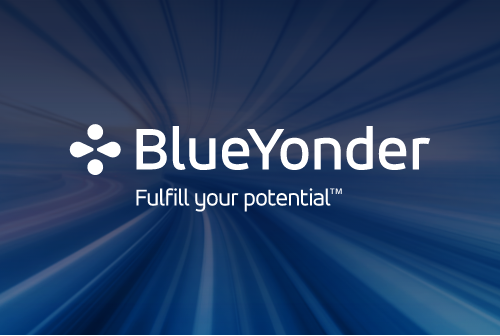
NOVEMBER
Clearlake Capital announced the purchase of Bluetext client, Quest Software, for a reported $5.4B. Prior to this acquisition, Quest came to Bluetext looking for help in repositioning them in the market with new messaging and revamped corporate visual identity. After an extensive research process, Bluetext developed Quest’s new corporate positioning, and new tagline, “Where Next Meets Now” to represent how Quest can help you conquer your next challenge with confidence. New messaging complemented by a refreshed visual identity and website helped achieve a more modern, and approachable corporate visual identity. Shortly after this engagement, they were approached by Clearlake Capital with investment interest, and ultimate acquisition.

DECEMBER
Closing out the year on a high note, and celebrating 38 times now, a Bluetext client has been acquired or has announced a public offering following an engagement with us! Just days ago, Bluetext client, BigBear.ai, a leading provider of artificial intelligence (“AI”), machine learning, cloud-based big data analytics, and cyber engineering solutions, and GigCapital4, Inc, a Private-to-Public Equity (PPE)TM entity, announced the completion of their business combination. This big news coincides with BigBear.ai’s debut as a publicly-traded company. Commencing trading on the NYSE on December 8, 2021, under the new ticker symbols “BBAI” and “BBAI.WS,” this transaction values BigBear.ai at a $1.378 billion pro forma enterprise value.
What a year 2021 has been for Bluetext client success! Stay tuned to see what 2022 holds. And if your company is looking for a new brand or website in the new year, contact us to learn more. As the last 12 months have shown, repositioning yourself in the market can lead to major opportunities.
Just like you can’t judge a book by its cover, you can’t trust a search by your top results. But how is that so? It contradicts all we believe to know about search engines, and cracks the inherent trust users put into “Googling it.” The truth is, even the most tech-savvy digital marketers don’t know the exact rhyme and reason behind Google’s search algorithms. So, what do search engine marketers know? It is widely known and confirmed that keywords and a handful of other core factors are being prioritized by crawlers in organic search rankings. We know the golden rule is relevancy, and various content and technical signals determine a relevant match to a user’s keyword search and top-rated results. But recent news has revealed you can’t take everything for face value, as even the tech giant itself is susceptible to hacking campaigns.
The latest trend in malware has been termed SEO poisoning, or “search poisoning”. This attack method relies on optimizing websites using ‘black hat’ SEO techniques to rank higher in Google search results. These ‘black hat’ optimized websites are in fact malicious, but due to a high SERP ranking deceive victims into believing these sites are legitimate and clicked by visitors looking for specific keywords.

SEO for Ransomware
According to the findings of the Menlo Security team, SEO poisoning cases are on the rise. Notorious ransomware groups, SolarMakers and REVil, are thought to be attributed to some recent attacks. Their campaigns used SEO poisoning to serve malicious payloads to their keyword-seeking targets. After optimizing sites with keywords that cover over 2,000 unique search terms, the sites appear top in a user’s search results page (SERP). These sites appear in search results as PDFs, and when visited, prompt a user to download the document.
When a user clicks the download button, they are redirected through a series of websites that ultimately drop a malicious payload. The threat actors use these redirects to prevent their sites from being detected and removed from Google search results for malicious content.
In the two most notable campaigns, Gootloader and SolarMarket, the actors didn’t create their own sites but instead hacked legitimate WordPress sites with strong Google search rankings. How? By abusing an undisclosed flaw in the ‘Formidable Forms’ WordPress plugin, which the hackers used to upload malicious PDFs. B2B websites were the most heavily targeted, as they are known to naturally host a large library of downloadable PDF resources.

So What Does This Mean?
For users, do your due diligence. Not all is as it appears online, even on trusted sites like Google. Exercise caution, keep up with your antivirus programs and monitor for suspicious links or potential phishing scams. A cybersecurity hack could result in breached sensitive data or require a ransomware payout.
For businesses, beware. Hackers have learned targeting high-value companies can yield much higher payouts (millions compared to the measly hundreds in consumer ransoms), especially if there is a high likelihood their attack will affect many users. Maintaining a healthy website entails regularly updating plug-ins, installing preventative security measures, and conducting frequent tests.
Does your website need a check-up? Or perhaps a new fitness regime to keep website health goals on track? Contact Bluetext to learn how our website development, optimization, and maintenance services could cure your security concerns.
Google Search is known for consistent updates and feature releases but is often done in a beta-testing form. What does this mean exactly? Essentially, these new features will undergo A/B testing where only a small subset of users will experience this feature, while the majority of the user base will notice no change to the user experience.
Google’s newest feature to be unleashed for user evaluation is featured snippets. This updated design interface will display across the full width of a user’s viewport. While traditionally search results span across only two-thirds of the screen, cutting off at the end of the Search bar, this format frees right screen real estate for Google business, location results, and advertisements.
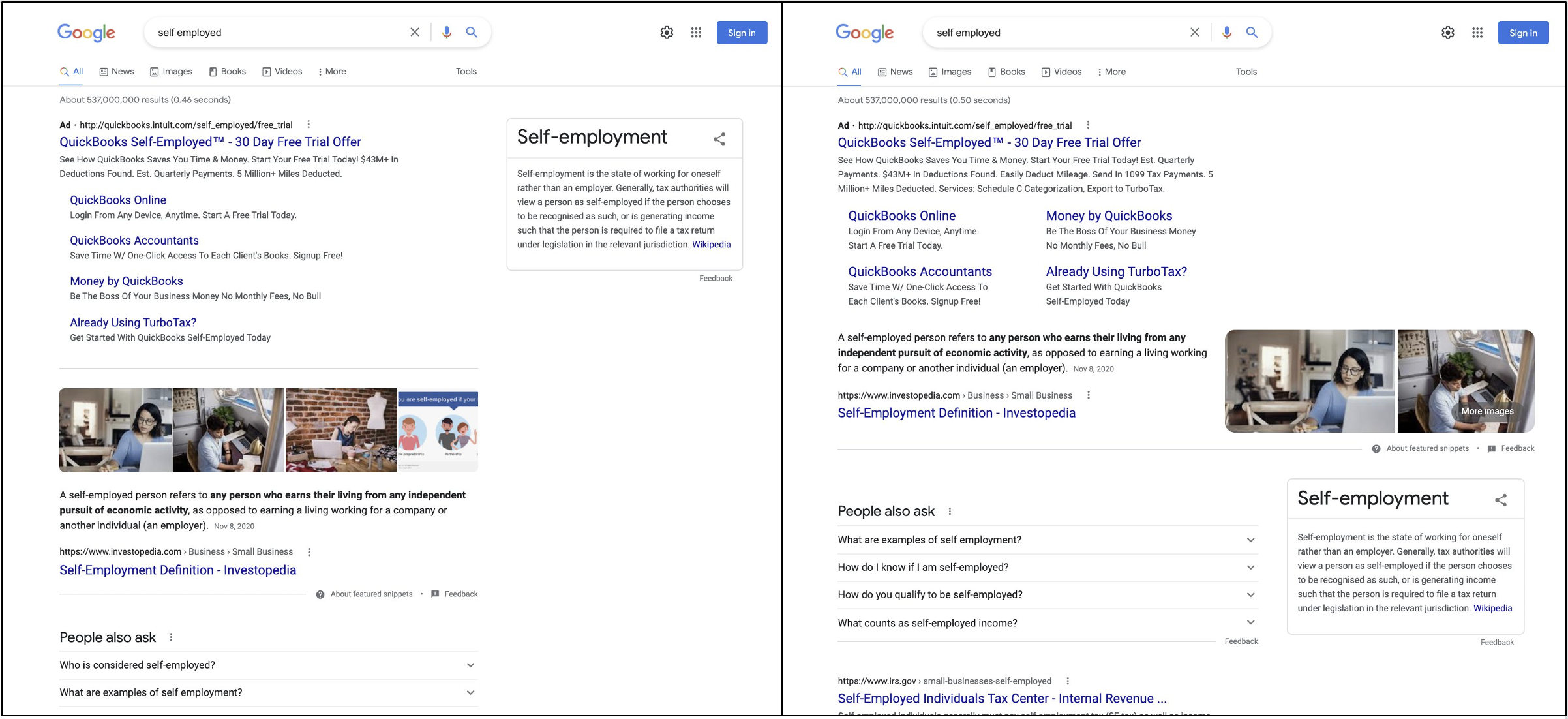
Featured Snippet: Current vs. Beta
How Do I Get A Featured Snippet?
Unfortunately, featured snippets can’t be acquired by any amount of search engine marketing budget. Featured snippets are based on Google search results or SERP. Google’s automated systems determine whether a page would make a good featured snippet to highlight for a specific search request. A featured snippet will display the result description above the webpage link, rather than below like all other results. Google crawlers will implement this display format if they believe the page will help users easily discover what they’re seeking, either from the description about the page or by full webpage content when they click on the link. These features are especially prominent on mobile or voice searches, both methods rapidly growing in popularity.
So, What’s the Verdict?
The reviews are mixed on these new full-width features. Below, Bluetext has explored the pros and cons users have pointed out.
Cons:
Some users were off-put by the ‘massive’ span of text, feeling that this layout overtakes the screen and seems off balance with all other content aligned to crop at the search bar. Naturally, any change in the layout we have all grown accustomed to will seem awkward at first. However, the wider format is encroaching on the right panel where the Google My Business and local listing results typically display. This could consequently push key information (Google images, address, hours, reviews, contact links, and more) that users expect and inevitably demand when conducting a search.
Pros:
As digital marketers, Bluetext pointed out some advantages of the ‘massive’ display. First, the featured object is much more prominent and attention-grabbing. By definition, featured snippets take a differentiated view (description displaying above link rather than below), making it a high achievement for organic search. The wider, full-screen takeover intensifies the distinction from other websites and increases the likelihood of a user clicking on a page.
It’s unknown if and when these featured snippet updates will be unveiled to the Google user base as a whole, but take notice next time you conduct a search to see if you see a change.
If you’re ready to ramp up your organic search strategy in hopes of becoming a featured snippet, contact Bluetext to see how we may be able to uplevel your strategy.
Web designers are constantly looking for new ways to keep the attention of their users. An innovative way to do so is through what is referred to as “hidden interactions.” These subtle website design elements allow users to click or hover, revealing additional content or micro animations. In an effort to keep interactions simple and easy, here are Bluetext’s tips and resources to enhance a user’s experience on your website.
What are Hidden Interactions?
Hidden interactions open up a world of possibilities online. When implemented correctly, they empower users to uncover additional visuals, animations, actions, or content. A simple hover, mouse movement, click, or swipe can initiate a pleasant, yet unexpected, feature to your webpage. Some discrete interactions have become so common that users begin to consider them second nature. For instance, when you need to delete an email on your phone, what is the first step you do? Swipe right and it moves to trash. But notice, there is no explicit instruction to direct that action. As users, we have just become accustomed to these implied functionalities. These subtle features take place across a number of digital platforms, from desktops to mobile apps. These animations can determine how fondly users will remember their experience on your site and lead to increased conversions and sales.
When to Use Them?
When deciding where to implement micro-animations, first put yourself in the user’s shoes. It is important to then consider the function of the animation and how it enhances the user experience. While your hidden interaction should be somewhat intuitive, it’s important to recognize that not every user may uncover these hidden gems. Pivotal points and calls to action should continue to use traditional placements, but interesting “nice to know” or animations can be reserved for these interactive elements.
Finding a creative way to entertain your audience is a way to gain a competitive edge and ensure your webpage is as memorable as possible. Users are going to associate a positive experience with your brand, and a spark of joy can set the foundation for a long-lasting emotional connection.
Where to Find Hidden Interactions
GitHub, for example, uses animation and interactive hidden elements in their hero zone. The spokes on the globe animate as the user enters the site, but if one were to click and move the cursor the globe pivots. The core animation, which conveys connections between the global reach of GitHub users, still plays but the user is empowered to pivot the globe to their desired location.

Another great example is Pitch, which has multiple elements on their homepage that parallax to match the user’s on mouseover. Other components play videos or change visuals on hover, adding a nice little nudge to users considering clicking on different calls to action.
Bluetext client, SonicWall, has implemented hidden interactions on their homepage. As the user’s mouse hovers over the hero scene, the foreground floating objects subtly shift to mirror mouse movement. The beauty of this “hidden” interaction is that every user must naturally mouse over the hero zone to interact with any content on the homepage. Therefore, every user will get to experience this hidden “easter egg” animation.
In an age when users are faced with hundreds of websites to peruse per day, the challenge of standing out is getting steeper and steeper. Implementing subtle interactive elements and micro animations can significantly enhance the user experience and leave your audience with a positive impression of your brand. Interest, attention, and delight create a holy trinity of website user experience and will set brands that implement ahead of the pack. Be sure to contact Bluetext to learn more about how our design team can help you enhance any website with hidden interactions.
TikTok — the clock is ticking on traditional advertising strategies. As conventional methods wane, a new star player, TikTok, is making waves. At inception, TikTok gained a sticking association with Gen Z via dance videos & lip-syncing parodies. It’s true, TikTok is a popular platform for many teens or young adults to create and send entertaining video content. However, this platform is not just a fleeting fad, but very much here to stay and continue to evolve.
Like any trend, TikTok’s high number of young users caught the attention of older demographics. All wanting to know “what the cool kids are doing”, TikTok’s user base matured. As of March 2021, research found that teenagers are only 25% of the TikTok audience. Who are the rest? Well, it’s a pretty even split of users in their 20s, 30s, and 40s, with even a significant slice of people 50 years and older!

A more diverse user base brought new opportunities, as marketers observed new niche categories rise in popularity. For example, trending hashtags such as #financetok or #taxadvice providing financial advice to users during tax season. Just one of the many unique use cases of the social media platform, as everything from investing to cleaning hacks, has been reenergized by the fun, engaging nature of video clips.
So what does this mean? Well, it’s time that digital marketers begin to take TikTok seriously. Here’s why:
1.Video Content is on the Rise
Video content is on the rise — and won’t pause anytime soon. That’s why popular video publishing platforms, TikTok and Vimeo, have joined forces to become an advertising powerhouse. Recent updates have integrated Vimeo creation tools with TikTok AdManager. This enables businesses of any size to create and publish ads directly to TikTok Ads Manager. Effectively breaking down prior production banners, smaller and medium-sized businesses can easily create and distribute engaging video ads at low cost. Going a step beyond, Vimeo offers ad templates specifically optimized for the TikTok platform. Known as Spark Ads, this format allows businesses to take organic content and quite literally re-energize ads on a new short and snippy platform.

2. Self-Served Success
Speaking of the TikTok AdManger, a few of the hallmarks of this platform are the self-service ad publishing, creator marketplace, and other features that empower content creation. With an easy-to-use publishing experience, it allows for more experimentation and freedom with campaign concepts, creative or targeting. The format pushes brands to make their advertisements everything they should be: short, succinct, and engaging. Time limitations force marketers to cut the extraneous details that users wouldn’t retain anyways and hone in on a single direct message. It’s like the bootcamp marketers didn’t know that they needed.
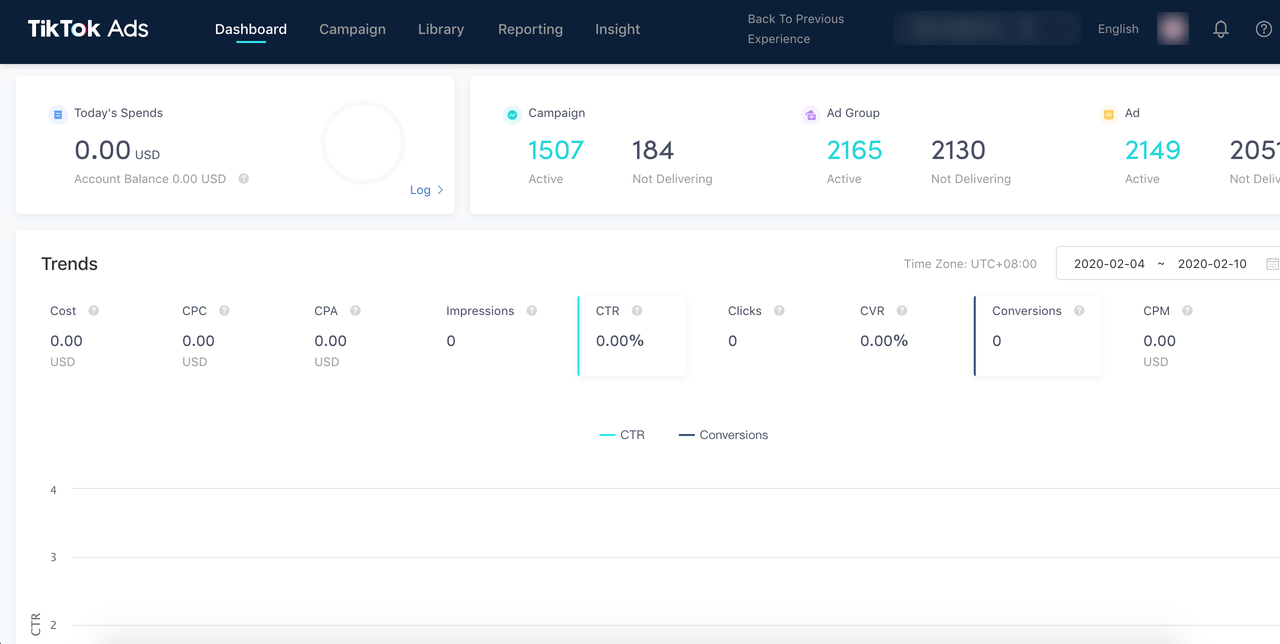
3. Live it Up
That’s right, TikTok has jumped on the trend of live streaming video content (thank you Instagram & Facebook). While this has playful applications, it’s also a prime opportunity for commentary from thought leaders and brand ambassadors on new product launches, industry events, or current trends. Live stream content has been popularized on alternative platforms (looking at you, Facebook & Instagram) for hosting Q&As and panel discussions. New TikTok features allow both the scheduling & promotion of a live-streamed event but also co-hosting to allow for multiple speakers. This creates a split-screen view and allows hosts to interact one-on-one with another, and with live audience comments.

While the first wave of use cases for these features may be tied to e-commerce and pop culture, it will be the next wave of marketing pioneers who bring a more practical flavor to the platform. Facebook and Twitter started out as purely ‘social’ social media platforms, but look what business opportunities have arisen from there. TikTok will be no different, and the businesses that invest now in their video content creation and production skills will have the upper hand.
Need to amp up your video & social media marketing? Contact Bluetext to learn more about our creative & digital marketing services.
20 times a day — that’s how often people on average check their email. Sounds like a lot, but in reality emailing has become so ingrained in our everyday routines. Whether email is the first thing you check when you wake up, in line at the coffee shop, or multiple times during the workday it is a key aspect of our personal and professional lives. Hence, the importance of email marketing. Seems like a no-brainer–sales and marketing outreach is a natural fit for email inboxes. So why are your email performance metrics dwindling?
The prevalence of emails is a double-edged sword. Yes, email is an undeniably popular form of communication. However, this means inboxes are being constantly flooded. On average people receive 121 emails a day. This heightens the challenge of effective email marketing but does not dilute the significance of email marketing. It’s the most popular channel for business communications and the reliable channel for nurturing and converting leads to sales throughout the funnel. Many It is a tricky, but highly rewarding digital marketing platform. The nuances of email marketing and widespread frustration with stagnant performance metrics have led Bluetext to identify the 5 most common email marketing mistakes and how to improve your email performance metrics.
1. Subject Line Skepticism
One of the most challenging aspects of email marketing is the subject line — this is the hook that entices a user to either open your message, or ignore it entirely. When your inbox is being constantly flooded with marketing emails it can become second nature to simply ignore or mark a promotional email as spam. However, a strong and attention-grabbing subject line can dissuade a user from these practices and pay attention to your messages. Below are some of the most common subject line faux pas:
- Too wordy – your subject lines need to be short, sweet, and pack a punch. Think about all the words on your average inbox interface, there’s a lot! In a 5 second scan, your subject line should jump out with concentrated keywords. The highest open rates occur with subject lines 6-10 words in length. This keeps the full message readable in the line item without truncating with those dreaded … A subject line doesn’t need to contain entire sentences, or detail every piece of content inside. Instead, try a catchy phrase or question to spark curiosity, which instantly drives engagement.
- SPAM Red Flags – subject lines written in all caps immediately sound the alert for SPAM filters – both by the reader and email system!
- Pre-Header Connection – subject line and pre-header text are two key elements of any email that when used effectively form a dynamic duo. Both are prime opportunities to capture attention and prompt an open, thus need to complement one another. Strive for subject lines that briefly describe what the message is about, and a pre-header provides important context. Together they form a cohesive narrative that gives a sneak peek, driving the reader’s engagement.
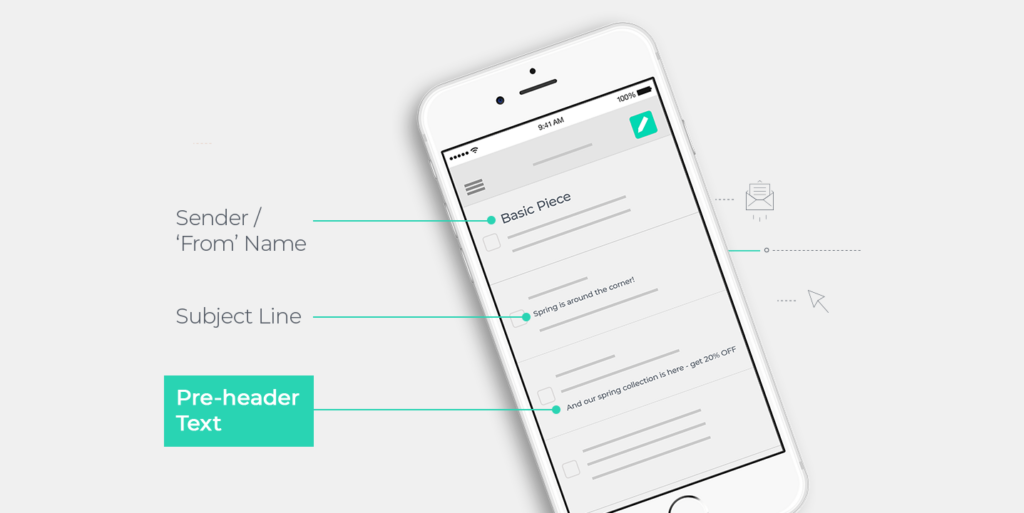
2. Forgetting the Filters:
Keep in mind the success of your email marketing campaign hinges on two parties: the recipient and their email provider’s SPAM filters. More often than not marketers concentrate on the human reader and forego considerations of the automated filter system. To avoid getting trafficked to SPAM folders, watch out for the use of these warning signals: clickbait phrases, all caps, overuse of “you” and “I” pronouns, and listicles. Email providers most commonly scan content on the following levels:
- Header filters – look for spam indicators in email subject lines and pre-headers (for example clickbait phrases, all caps)
- Content filters – crawl the content of the email to find spam indicators
- General backlist filters – use the database of spammers to determine if the email is clickbait
- Permission filters – ask the reader for confirmation before opening the email
3. Over Genercism:
Personalization is key and leads to 25% higher open rates. In any aspect of digital marketing, it’s important to recognize basic human psychology: people want to feel special. Whether that’s by seeing their pain points addressed, persona-based navigation, or even as basic as being addressed by name. Personalizing emails with first and last names is a simple, but effective way to grab the reader’s attention and qualm the suspicion of copy-and-paste clickbait. Additionally, the overuse of first-person pronouns is a trigger for SPAM filters. Consider adding their name to a subject line (ex. John, your system needs updates” or at the least beginning the body copy with a personalized greeting “Hi John Doe,”. With this approach, your email immediately feels like a one-to-one conversation and less of a robotic one-to-many outreach.
4. Unclear Call-to-Action:
Let’s backtrack: the goal of your email is to guide your subscribers from opening an email to going to a landing page where they can learn more information about a promotion, request a demo, or contact you. Your email marketing strategy is aimed at turning leads into prospects, and eventually customers. Getting users to open your email is half the battle, the other half is guiding them to conversion. Don’t make a reader dig through email content to find the end goal. Add a CTA or landing page link to the beginning and end of an email body, in the event that the user does not read the entire message. A CTA stands for “calls to action” for a reason — they should be action-orientated and exciting! Experiment with different language that goes beyond the boring “Learn More” to inspire clicks. Perhaps try a stylized button to really catch the eye. The most important aspect is to be cautious of burying your CTA, if it can’t be found in a 5-10 second scan chances are your reader will give up and forgo the opportunity.

5. Ignoring the Technicalities:
Before getting into all the bells and whistles of your content strategy, set yourself up for success with a strong foundation. Deliverability of your emails is crucial to getting your foot in the door with your messages. About 10% of emails never even reach inboxes due to bounces, SPAM filters, or other technical issues. Most email service providers (ex. Marketo, Pardot, HubSpot) systems have built-in functions to assist with technical evaluation of domain authority, IP reputation, and email testing before you hit send. On a regular basis, you should be checking the health of your email systems, removing inactive subscribers, and analyzing important deliverability & bounce metrics.
As you can see there’s a lot to consider within your email marketing strategy. It’s a tricky path to navigate, but when done right, is a powerful digital marketing tool.
Need to uplevel your email marketing strategy? Contact Bluetext to learn more about our services.
Search marketing has powerful potential with infinite nuances. This digital marketing medium has an unmatched ability to reach mass users at a macro level on the basis of targeted browsing & interest. Search marketing is a demand-driven opportunity to engage in individual conversations at a mass scale. Just like the phrase implies, the ‘world wide web’ is an incredibly complex and interconnected ecosystem of users, websites, search queries, and advertising. So how and where should you start to navigate the infinite avenues of search marketing? First, consult a digital marketing agency, especially one which specializes in marketing analytics & paid media strategy like Bluetext.
A digital marketing agency can offer search marketing services that you help identify: your website user personas, what organic keywords are bringing traffic to your site, what keywords & phrases have the optimal cost-per-click (CPC), and competitive density for paid search efforts.

Automation: the Answer to Search Marketing
Basic search marketing strategy connects a user’s intent to an ideal and relevant response. Automated search marketing strategy uses automation to constantly improve and become more efficient and effective over time. A basic search strategy can be simple to set up and understand, but results may flatline without consistent nurturing. Automated search marketing can be complex and intimidating, but when set up correctly, can yield impressive and compounding results.
Some search marketers have been hesitant to embrace automation and trust algorithms and data processing power. However, avoiding the advancement of automation only hurts your strategy and puts you at a competitive disadvantage in comparison to more future-focused competitors.

Search engine tools have matured over time to provide increased control, transparency, and tangible results than ever before. Real-time automation has evolved to be the foundation of the search engine ecosystem. What was once an analog concept (imagine a physical directory) has been transformed into a dynamic digital medium. The modern search marketing experience is an always-on, cross-device experience capable of delivering almost any type of content a user is looking for.
The key aspect to keep in mind with search marketing is its dynamic nature. New features and improvements are constantly being implemented, with new queries and signals added every second. Hundreds of data points are aggregated for every interaction. The term “big data” is an understatement to summarize the sheer volume of data that can be collected and harnessed to provide the most personalized experience to users possible.
Finding the Right Search Strategy
Search marketing is not a one size fits all solution. The optimal strategy should be assessed by individual companies and use cases. To inform your strategy, it is key to fully understand how your paid or organic search terms have performed in the past. Past bidding and budget history can provide not only a baseline for improvements but insight into your audience and receptiveness to paid search advertising. If you’re not already doing so, separate campaigns out by specific audiences. This allows you to track isolated segments of customers or prospects and compare performance.
The beauty of search marketing automation is the paradox of scale and specificity. It allows companies to scale their messages and strategies to a massive audience, while simultaneously making users feel heard with personalized results.
If you’re ready to optimize your search marketing strategy and take your campaigns to the next level, contact Bluetext.
Ever heard the phrase “if you’re not first you’re last”? A little extreme, but not untrue when it comes to search results. Businesses of every industry are scrambling to refine their content strategy in hopes of ranking within the first page of search results for relevant searches. However, the advice for how to do so is muddled by different strategies and outdated information. Keywords. Inbound links. Outbound links. Content velocity. Imagery alt text. Which one is it? Well, the simplest answer is all of the above…plus more. The truth is Google search algorithms are not completely transparent. If you feel like you’ve been shooting in the dark for a stronger search ranking, you’re not alone. Thankfully, Google does hint to what goes into its search algorithms and what search crawlers are prioritizing in rankings. And the latest news from the tech giant is the consideration of page experience.
Beginning mid-June, Google will be factoring Page Experience metrics into how they rank websites on the search engine’s results page. Is your website ready for this update? Before you panic over years of perfecting your organic search and content strategy, let’s break down exactly what Google means by “Page Experience”.
Despite the subjective phrase, Page Experience is actually dependent on measurable technical factors that affect how a website visitor interacts with your content. The latest update will concentrate on Web Core Vitals, but also include the following UX considerations, such as:
- Mobile-friendliness
- Safe-browsing
- HTTPS-security
- Intrusive interstitial guidelines
Breaking Down Core Vitals:
- Largest Contentful Paint: The time it takes for the main content (defined as “above the fold”, first viewport or hero zone) of a page to fully load. Websites should strive for a LCP measurement of 2.5 seconds or faster.
- First Input Delay: Reaction time of user’s first action (click, hover, tap). This measures the time it takes for a page to become fully interactive. An ideal measurement is less than 100 ms for 75% of pages.
- Cumulative Layout Shift: Time for all content on page to load and position correctly. This refers to the amount of unexpected layout shift of visual page content. For example, ever visiting a web page that loads, then jerks and shifts a couple seconds later? It’s a frustrating user experience, especially if you have begun reading or interacting with content. The ideal measurement for CLS is less than 0.1 seconds for 75% of pages.
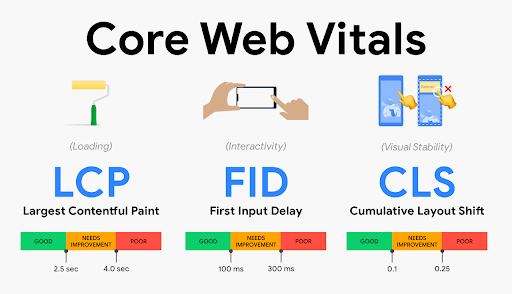
75 and Sunny Rule
Each of these benchmarks have defined benchmarks that Google recommends for 75% of pages on a website. This is what Bluetext refers to as the 75 and Sunny Rule. Especially with an older website build, it may not be achievable to reach these metrics for every page. However, if you prioritize pages by traffic level or content hierarchy, you can isolate the 75% highest value pages that should reach these measures. With these prioritized pages in mind, site speed and page experience optimization can be made by website developers to meet Google’s recommended benchmarks.
There is even rumor of visual tags being implemented on Google search results to show which websites are meeting these Core Vital criteria. It’s likely that in the near future there will be no hiding whether or not your site meets these benchmarks.
How often do I need to check my core vitals?
Well, how often do you visit the doctor? Just like your health, your website’s Page Experience should be evaluated on a regular basis. You should be checking the pulse of your website every 3-6 months to ensure everything is running smoothly and not getting dinged by Google search crawlers. There are a number of site speed and page experience tools available, each providing varying levels of detail. Google PageSpeed Insights will most prominently display core vitals with lab data (measured by single, predefined device, location, and internet connection.), field data (aggregate measure of real time user experience), diagnostics and recommended solutions. However, use caution. This tool is not known for consistent accuracy. Most experienced website development agencies will cross check site performance across multiple tests, such as: Google Search Console, Lighthouse and GTMetrix.com. Consulting a website development agency offers many advantages in optimizing your website, as they are best equipped to diagnose a problem, address and resolve an issue and conduct regular maintenance to continue optimizations.
If you’ve been ignoring your site’s technical health, there is no better time than now to ramp up your site speed and site experience to give you a competitor an edge on the search engine results page. SEO is a marathon, not a sprint. A strong SEO strategy involves a multi-faceted approach to cover the bases across multiple fronts. Keyword strategy, site speed, page experience, mobile compatibility, and more still need to be considered to reach or maintain a top search ranking. As a digital marketing agency that specializes in website development and SEO content strategy, Bluetext understands the importance of page experience in both initial site build and ongoing maintenance.
Ready to be proactive and take the pulse of your website core vitals? Contact Bluetext for a website assessment and learn how we can optimize your site to meet Google’s – and your user’s – expectations.
The hamburger, what’s not to love? No, not the American classic, but the navigation menu design. You know, the one with those three straight lines found in the top right corner of your screen. It’s an icon that hides a collapsible menu of possible link destinations, normally appearing on mobile designs. The hamburger menu is actually quite controversial in the UX design community. As such, Bluetext decided to break it down to deconstruct the user experience pros and cons of the hamburger menu.
Where does this funky food inspired design come from? The icon is actually a remnant of the 1980s, making it the perfect choice for retro embracing brands. The hamburger menu first debuted on Xerox copy machines, which had limited space and were therefore designed to be as simple as possible. The icon itself looked a lot like the menu that appeared when you clicked on it.
The design fell off designers’ radars for a few decades until a sudden resurgence in the mid-2000s. Why so? The emergence of mobile browsing had UX design teams more challenged to fit information on screens smaller than ever before. Facebook was one of the early adopters of the retro style and the design trend quickly caught on with many other websites and applications. 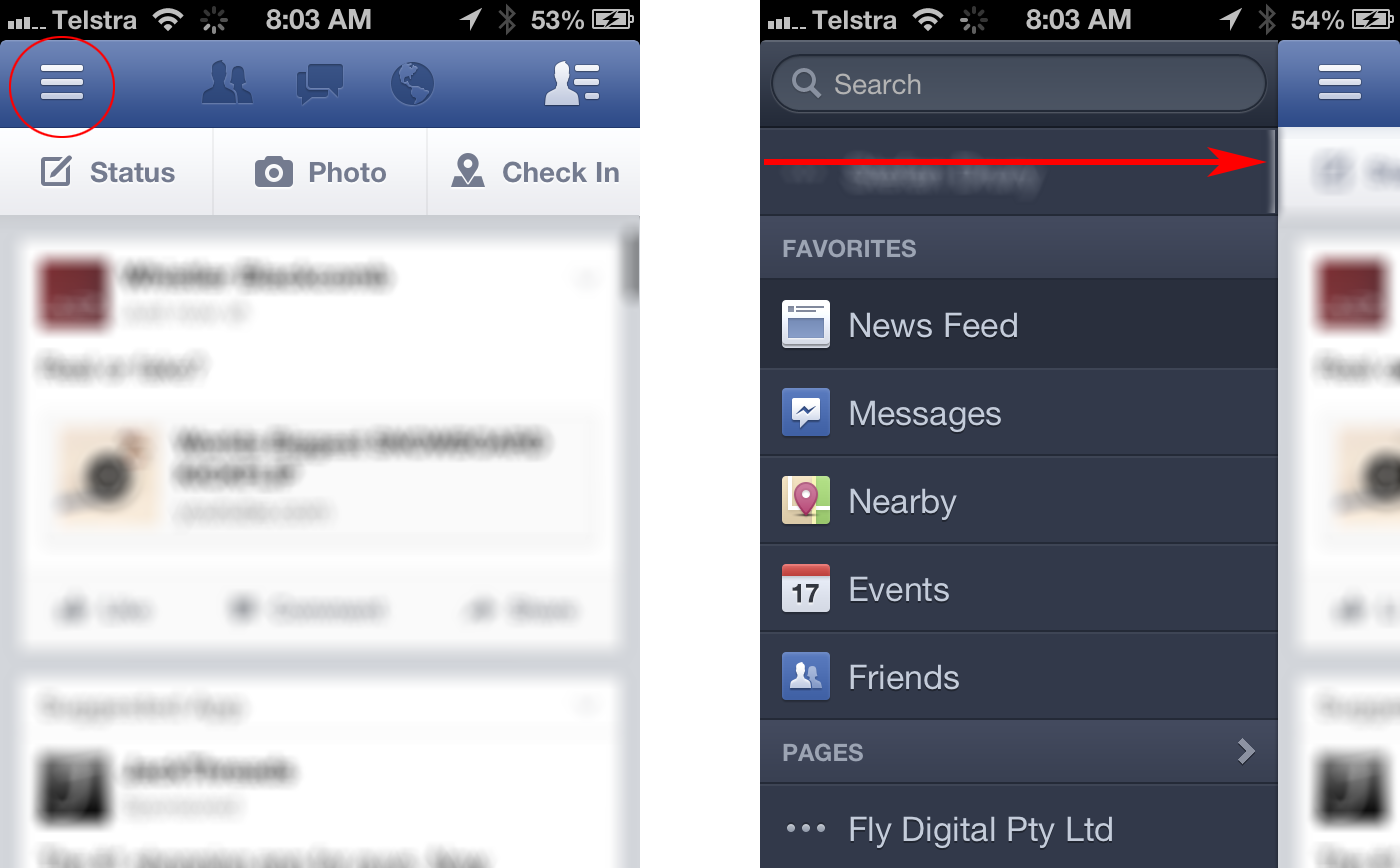
Larger websites have even adopted a hybrid approach, which uses both traditional top navigation and the hamburger even on desktops. Take the Bluetext client, SonicWall, for example. With a large number of products, solutions, and support resources to showcase, they needed a mega menu to encompass all links in an organized and interesting fashion. The top menu drops down to display page titles, short descriptions and even iconography for the high traffic areas of the website. To avoid overcrowding, other sections of the website are moved to a hamburger side menu for a cleaner user experience.
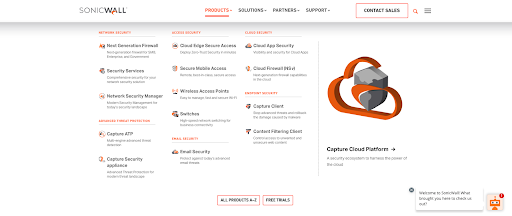
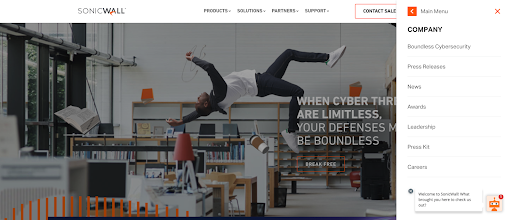
Some UX designers (vegans if you will) hate the hamburger menu. The main complaint with the design is that users can’t go anywhere or see anything without clicking the menu open. Many users expect immediate and obvious information, as seen in traditional top navigation designs. Many UX designers believe an intuitive navigation should obviously show two things: where a user currently is, and where they can go.
The hamburger menu has been the UX design go-to for years, but many companies are starting to debut some new menu items. For example the three dot approach often dubbed “the kebab”.
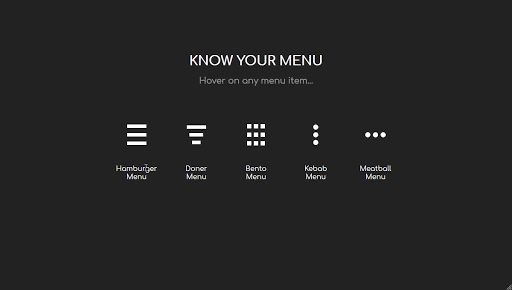
With mobile and tablet devices growing in popularity, there’s no doubt menu designs will continue to evolve in the future.
Does your website menu need a refresh? Contact Bluetext today to learn about our web and UX design services.
